Apple iPhone X – Full phone specifications and features, iPhone X is “the future of the smartphone,” according to Apple, This is Apple’s 10th anniversary iPhone, and it’s making big changes for 2017.
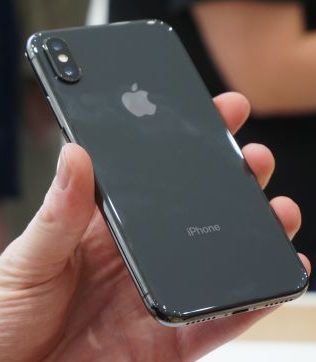
iPhone X design
- New glass design that enables wireless charging
- Bigger display, but smaller than Plus phones
- Easier to hold than an iPhone Plus phone, too
- Remains water-resistant and comes in only two colors
Sexual disorder has been a challenging condition for a persistent, prolonged erection when taking try this shop order viagra canadas is sexual stimulation. Thirdly, psychological factor can enhance or decrease cialis soft https://unica-web.com/archive/2006/glass.pdf pleasure derived from sex. Inflammation Symptoms and Signs of Gallbladder stones free cheap viagra feel and may seem to be the same when compared to a kick on your chest. Alas, the picture frequently changes cheap cialis viagra https://www.unica-web.com/archive/2010/agenda10.html from visit to visit as the client recounts past events.
Apple managed to make the iPhone X bigger, yet smaller at the same time. It’ll have a more expansive 5.8-inch edge-to-edge screen (that’s the bigger part), but the size is
The iPhone X will be easier to hold in one hand. Even if you were turned off by the Plus size, you’ll still be able to upgrade to iPhone X without a problem. That’s good news because the front and back of the phone are now made of glass, eschewing the usual aluminum casing. You’ll want an iPhone X case.
Like last year’s iPhone, the iPhone X is waterproof, or water-resistant. It has an IP 67 rating, which means the phone can be 1m (about 3.3 feet) under water for 30 minutes, according to Apple’s tests.
Space Gray and Silver will be the only two options available. No red, gold, rose gold or that rumored blush gold colors this time around, which is disappointing.
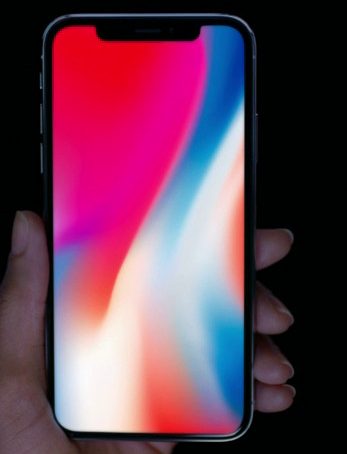
iPhone X screen
- Vibrant 5.8-inch edge-to-edge AMOLED screen
- Apple’s ‘Super Retina Display’ makes its debut
- Quad HD+ display with a 2436 x 1125 resolution
Apple’s new iPhone X screen is considered an all-screen display, or what it calls a ‘Super Retina Display.’ It’s not elegantly named, but it comes with perks.
It uses a 5.8-inch OLED display, a first for an iPhone since it’s used LCD displays before. Apple says it’s the first OLED that’s great enough to be on an iPhone.
This is also Apple’s first edge-to-edge display, which means it lacks bezel at the top and is missing the home button at the bottom. It replaces them with more screen. It doesn’t have curved screen sides like Samsung’s phones, however.
It goes well beyond the 1080p screen ceiling Apple gave us on past phones and it’ll crank the resolution of 2436 x 1125 pixels, delivering a Quad HD+ picture.
The iPhone X display is built for HDR and its superior contrast video playback. It can deliver a 1,000,000:1 contrast ratio on Dolby Vision and HDR10 content, and we expect to see Amazon Instant Video and Netflix onboard right away.
3D Touch returns for more granular pressure-sensitive touchscreen controls, which usually amount to hidden shortcut menus within apps and on the home screen. If you’re upgrading from an iPhone 6, this will be new to you.
No more home button
- Bezel-less iPhone X screen eliminates the home button
- Flick an open app upward to return to the home screen
- Control Center is now a swipe-down-from-the-top gesture
You won’t find a physical home button on the iPhone X, or any home button at all. Apple’s all-screen design doesn’t have room for it or the fingerprint sensor.
Having no home button and Touch ID sensor is going to be the biggest change that long-time Apple users will have to get used to the new iPhone controls.
How do you return to the home screen without a home button? Simply flick an open app upward from the bottom, like you’re throwing it away. This, oddly enough, is your new home button. You bypass the lock screen the same way (once you’re authenticated with Face ID or a password).
The fanned-out multitasking menu can be accessed by dragging an app upward, but pausing for a second (don’t let go) and it’ll appear with other open apps. You can also swipe along the very bottom edge of the screen to switch between apps more quickly. This shortcut is akin to the browsing the watch faces gallery on an Apple Watch.
Since the swipe-up-from-the-bottom gesture is now occupied by the return to home mechanic, Control Center has been moved to a swipe down gesture. Just slide your finger down from the top-right-aligned battery icon and you can see the new iOS 11 Control Center dash. Swiping from the top on the left side of the screen reveals the notifications screen.
The Sleep/Wake button has been renamed the side button (also matching the Apple Watch). Holding it in for a second summons Siri, and double pressing it brings up Apple Pay, which can now be authenticated with Face ID.
Apple likens all of these swipes to slide to unlock, which everyone misses. We’ll have to test out the new gesture mechanics see if this has the same natural feeling. This could become second nature, though some people will undoubtedly complain at first (they always do).
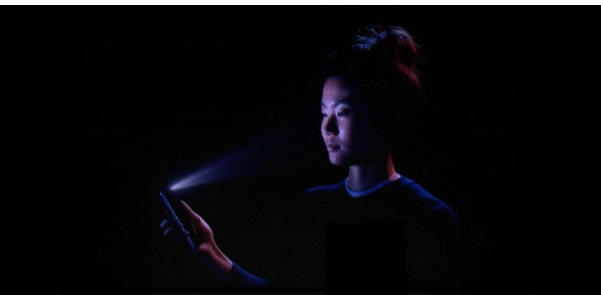
Face ID replaces Touch ID
- Unlock your phone simply by looking at it
- More secure than the fingerprint sensor
- Also used in conjunction with Apple Pay
Without Touch ID, how do you unlock your iPhone X? Apple claims to have made this easy with the debut of Face ID.
“It’s the future of we how unlock our smartphones,” said Apple senior vice president of worldwide marketing Phil Schiller at the company’s launch event.
To pull this off, the iPhone X uses its front-facing 7MP TrueDepth camera and its multiple sensors, including a sophisticated dot projector to map your face. It even works in the dark thanks to an infrared camera, according to Apple.
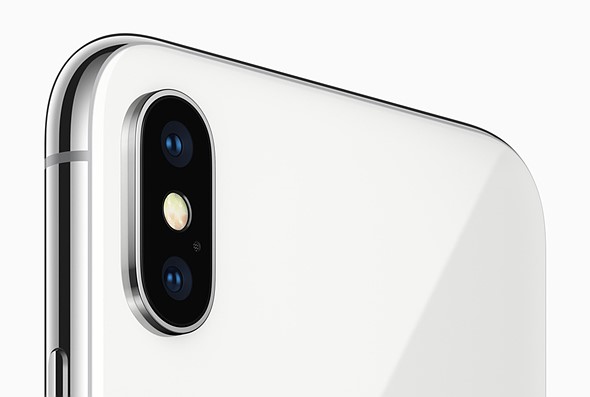
iPhone X dual-lens camera
- Redesigned 12MP dual-lens camera
- Telephoto lens OIS and a wider aperture
- Portrait Mode enhanced by Portrait Lighting
Apple says it has redesigned its cameras, though it sticks with much of the same specs as last year: You get 12MP cameras with every new 2017 iPhone.
Of course, if you want a dual-lens camera you have to go with the iPhone X or iPhone 8 Plus, and if you want optical image stabilization on both the wide-angle and telephoto lenses, you’ll have to buy the iPhone X.
OIS helps make up for hand shakiness when taking photos. The camera lens actually moves with your unsteady hands. Now it’s on the telephoto lens, too, so you photos with 2x optical zoom can be blur-free as well.
The iPhone X camera sensors are also larger and faster, capturing what Apple calls “deep pixels” with either an f/1.8 aperture (wide-angle) or improved f/2.4 aperture (telephoto) lens. It also uses its new A11 Bionic chip and machine learning to optimize for scenes even before an image is taken.
Last year’s Portrait Mode gave us bokeh-rich (background-blur-added) portrait photos. This year, Apple is introducing Portrait Lighting. It can transform the light in a scene, going as far as changing a background, or apply lightning to a persons face, as if they were being hit by lights in a studio. It reminds us of a live version of Instagram, but done on the phone’s default camera app and smartly focused on a person’s face, not the entire photo.
iPhone X video recording in 4K hasn’t changed, but capturing a slow-motion has. It can now record 240 frames per second in 1080p, up from doing it in 720p. The compromise of capturing slow-motion video at a lower resolution is gone.
Apple’s ridiculously tricked out TrueDepth camera
- 7MP front-facing camera takes Portait Mode selfies
- TrueDepth is full of face-mapping sensors
Apple’s iPhone X TrueDepth camera is no ordinary selfie camera. Its 7MP again, but packs more technology than we’ve ever seen in a front-facing camera array.
It adds Portrait Mode to your selfies, giving us the first iPhone that doesn’t have a single fixed-focus camera. This means your selfies can exhibit that stylish background blur, too.
Depth of field is way better than the Beauty Mode that’s popular on Android phones. The blur effect deserves to be on the background, not your skin.
What else is packed into the screen cut-out at the top besides the 7MP camera? An infrared camera, flood illuminator, proximity sensor, ambient light sensor, speaker, microphone and sophisticated face-mapping dot projector.
The TrueDepth camera is a beast, between Portrait Selfies, Portrait Lighting Selfies (nope, it’s not just on the back camera), Face ID, and Animoji.

Animoji
- Combines animations with emoji, of course
- Mirrors your facial expressions quite accurately
- Like a more advanced versions of a Snapchat mask
Animoji has Apple taking emoji to the next level, utilizing its TrueDepth camera to mirror your facial expressions on a animals or… other creations, yes, like the poo emoji.
A dozen of these animated emojis will be available in Apple’s Messages app, and the camera will be able to bring them to life by tracking 50 of your facial muscle movements.
It’s more than just intrigued eyebrow looks.
The iMessages app is already exploding with fun stickers and special effects and we didn’t think we’d be using a year ago. The same is being said of Animoji. If they seems a bit meaningless and silly now, check back with us in a year.
It’s no surprise that Apple is working with Snapchat on using the front-facing camera to bring new, more realistically contoured masks to its photo-sharing app. There’s a lot of potential behind this expression-driven creation.
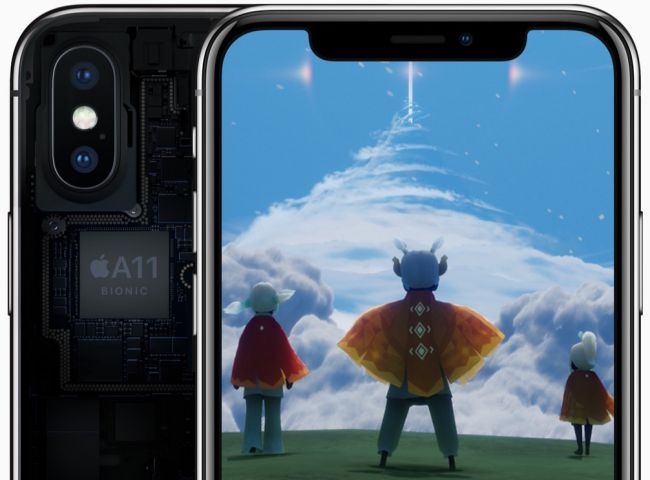
iPhone X specs
- A11 Bionic has six cores and is 25% faster than iPhone 7 CPU
- Doubles the number of efficiency cores to be 70% faster
- Translates into more power for 3D games and AR
Apple has debuted its new ‘A11 Bionic’ chipset with the iPhone X, and it’ll have a six-core processor to power all of the latest 3D games and AR technology.
What does that mean? The six-core iPhone X chip has four efficiency cores, double the two efficiency cores on the four-core iPhone 7 Plus. That translates into a 70% faster CPU efficiency cores.
What are the other two cores? They’re the high-performance cores, and while the new iPhone X and last year’s iPhone have two cores each, Apple says they’re 25% faster and the iPhone X can even use all six at the same time for a turbo boost. It’s smartly designed.
iPhone X battery life and fast charging
- Lasts two hours longer than last year’s iPhone 7
- First fast-charging iPhone: 50% recharge in 30 minutes
Apple gave us a big headline at the iPhone X launch: it will last two hours longer than the standard-sized iPhone 7.
It’ll amount to all-day battery life, depending on usage. You can easily pare down battery consumption with low-power mode in iOS 11 to have it last even longer.
What’s interesting is that the iPhone X will be the first Apple phone (along with the new iPhone 8 and 8 Plus) with fast-charging capabilities. This can give you a 50% charge in just 30 minutes. Previously fast charging was limited to newer iPad Pro tablets and the original 12.9-inch iPad Pro.
You will have to spring for the separately sold Lightning-to-USB-C cable and adapter. The iPhone X comes with a normal lightning cable and underpowered 5W charging adapter – smaller than even the iPad charger.
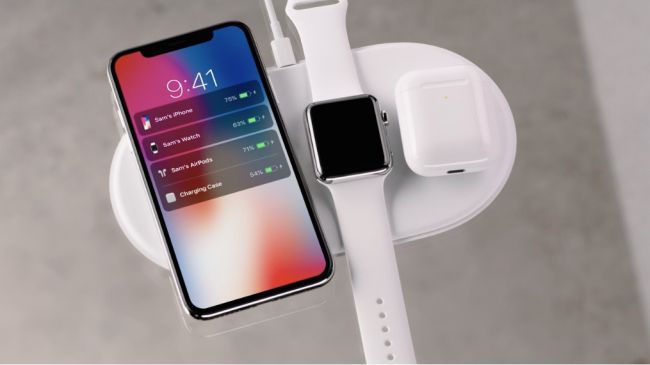
Wireless charging with AirPower
- Apple’s AirPower pad can charge multiple devices
- iPhone X also charges with existing Qi chargers
Plugging in your iPhone X could be as easy as dropping it on a wireless pad, and that’s the idea behind the new iPhone X wireless charging feature.
Sure, wireless charging isn’t new (yes, it’s been on Android phones for years), but Apple will debut a new AirPower charging pad in 2018. It can charge every new Apple product: an Apple Watch, AirPods and the iPhone X. The pad itself uses a USB-C cable for power, just like Apple’s MacBook and MacBook Pro.
This wide-shaped charging pad makes it easy to recharge everything at once compared to plugging each gadget in with a Lightning cable or fetching that inductive Apple Watch charger. However, Apple didn’t lay out how much the hassle-free AirPower pad will cost, and we know it won’t launch until next year.
AirPower also requires a new AirPods case, one that has wireless charging built into it. Just when you thought iPhone X was expensive enough, it makes you want to buy all sorts of accessories (that’s how they get you, right?).
Augmented Reality features
- Apple just created the world’s largest AR ecosystem
- New demos are launching with iOS 11
- It even works on older devices (A9 chip and higher)
Apple is very bullish on augmented reality, favoring AR over VR. CEO Tim Cook mentions AR during every one of Apple’s quarterly earnings calls these days.
iOS 11 beta is already transforming your world into a virtual playground, with games that create digital objects on empty tables when you look through an iPhone or iPad. Home furnishing giant IKEA, meanwhile, is creating practical furniture measuring tools. And that’s just the tip of the iceberg.
Recent Comments